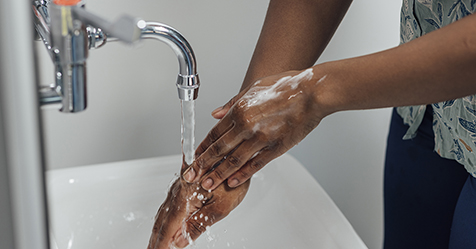Cleaning Up Safely After a Flood
The recent Kentucky floods serve as a reminder for facility managers to be prepared.
The devastating flooding that hit Kentucky in late July and the massive cleanup efforts to follow are crucial reminders to facility managers to always be prepared for floods in their own buildings.
In fact, when affected by flooding, the sooner you can start cleaning, the better. The Kentucky governor’s website is already urging the state’s current flood victims to not wait to clean up.
To ensure a safe cleanup of your facility after a flood, here are actions that you’ll immediately need to take.
Safety First
The safety of your workers is always job one. Before anyone enters the building, be sure to:
- Look out for damaged power lines, gas lines, and other structural damage, such as sagging floors or ceilings.
- Turn off main electrical power and water systems. Remember that no one should ever be dealing with electrical power while wet or standing in water!
- If possible, open doors and windows to help air out the building.
Protect Yourself and Your Workers
Anyone who will be cleaning needs to wear protective gear. The U.S. Centers for Disease Control and Prevention (CDC) suggests the following:
- Hard hats
- Goggles
- N95 masks (or a respirator with a higher protection level)
- Heavy work gloves
- Waterproof boots with steel toe and insole (not just steel shank)
- Earplugs or protective headphones (if you’re working with noisy equipment).
If sewage is involved, make sure the gloves and boots are made of rubber. You’ll also want to make sure everyone is wearing long pants and shirts with long sleeves.
Report the Damage
You’ll need to report your building’s flood damage to the appropriate insurance company as soon as possible. So before beginning any cleanup:
- Take photos of all the damage. Be sure to include photos and/or videos of the outside and inside of the building. Label the images and recordings by room.
- Photograph the make, model, and serial number for all equipment in the building.
- Separate damaged items from undamaged items. The insurance adjuster might need to document damaged items when conducting an inspection.
- If possible, keep samples of carpeting, flooring, wallpaper, and drapery.
Once photos are taken, cleanup can begin.
Clean Safely, Effectively, and Efficiently
To make sure your efforts are effective and efficient as well as safe, employ the following techniques when cleaning flood-infested areas:
- Decide which cleanup tasks are the most important and focus on those first.
- Have teams of at least two people work together to move heavy or bulky objects.
- Immediately remove any wet items from the building.
- Throw away damaged items that absorb water and cannot be cleaned, such as perishable food, clothing, cushions, and pillows.
- Clean walls, hard floors, and other hard surfaces first with soap and water, and then disinfect with a solution of one cup of bleach to five gallons of water, which can help prevent mold, a common consequence of flooding. (Remember also to never combine bleach and ammonia, as the resulting vapors are hazardous.)
- Use hot water to wash any fabrics that can be salvaged.
- Make sure workers take breaks and rest as needed.
- Provide clean, safe water for workers to drink.
- Instruct all workers to wash their own hands and use hand sanitizer regularly and often.
- Watch out for any sharp or pointy objects, such as protruding nails and screws, aluminum, and broken glass.
- Prevent carbon monoxide (CO) poisoning. Keep any generators outside and at least 20 feet away from any doors, windows, or vents. If a pressure washer is used, keep its engine outdoors and follow the same rules as with generators. Never run a car or truck inside a garage that is attached to a building, even with the garage door open.
If there’s ever doubt about keeping any flood-damaged item, err on the side of caution and get rid of it. When in doubt—throw it out!
After the cleanup, be sure to remember to save receipts from all repairs that took place due to the flooding for insurance purposes.


